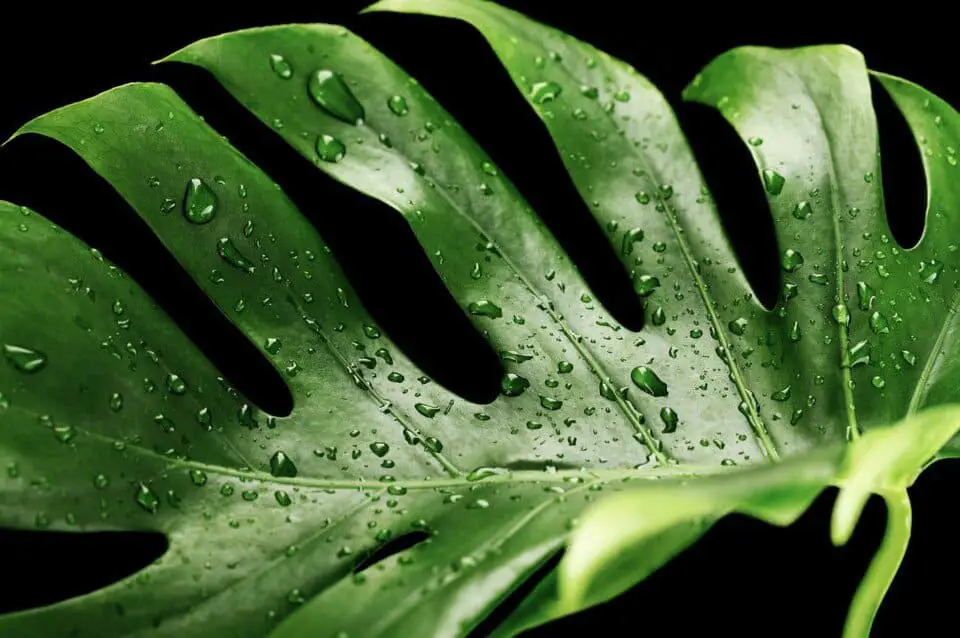Some links in the post are affiliate links and I get a commission from purchases made through some links found in the post.
When you put so much energy into your house plants, it’s heart-breaking to discover that your houseplants aren’t doing as well as you’d hoped after all your hard work.
However, even those who are meticulous in their Monstera care may encounter some health issues with their plants, so don’t be alarmed if you think you’ve done everything right.
Why are my Monstera Leaves Ripping?
A cause of your monstera leaves ripping is overwatering or under-hydrating your plant. Bug infestations, or heat stress may also be to blame! Find out what’s wrong with your plant by inspecting it closely.
Also your plant could be ripping due to mechanical damage to Monstera leaves which is often caused by something bumping, running into, pinching, or squeezing the leaf.
Like when it’s being moved (when a dog toy was actually thrown into it). Their leaves are more sensitive and vulnerable to being handled carelessly in low humidity.
Tears or rips in your Monstera leaf are frequently the results of mechanical damage. The wounds are brown and ‘healed,’ whether in the middle of the leaves or on the borders.
If the scars, holes, or marks all appear the same and are uniformly spaced, this type of injury is easy to spot.
It can harm Monstera leaves even though they are typically hardy plants. It’s possible to have rips and tears caused by various factors.
While some of these issues aren’t necessarily reasons for alarm, others should be addressed as soon as possible.
What do you do with Ripped Monstera Leaves?
Your Monstera’s leaves are dead if they turn brown or black. In the end, there’s nothing you can do about them. Damaged leaves must be removed following their size and extent.
Your plant’s health will increase, allowing it to develop new leaves. Read on for advice on removing Monstera leaves that have been damaged.
1) Damaged leaves should be removed
 Monsteras with damaged leaves should be pruned. Trimming dead leaves improves your plant’s health.
Monsteras with damaged leaves should be pruned. Trimming dead leaves improves your plant’s health.
Photosynthetic activity in dead leaves is halted. For all your Monstera’s leaves that have turned brown or black, the process is effectively over.
Dead leaves have no defence against rot and infection compared to healthy ones. In decaying plant cells, these organisms take up the nutrients provided by bacteria and fungi.
For example, mold can grow on dead leaves on the plant or soil. Remove any dark or damaged tissue to help keep the remainder of the plant safe from these diseases.
When a leaf is ripped or torn accidentally, only the ripped edge will brown to seal the wound, which is typical for such slight damage.
If the injury doesn’t affect other parts of the plant or disrupt your enjoyment of its aesthetics, it’s perfectly OK to leave minor flaws to remain.
Because root and stem damage disrupts the plant’s capacity to transfer water and nutrients, it is more severe than leaf damage. Root rot and stem damage will be covered in upcoming articles.
2) Pruning leaves that are damaged or dead
If the leaf is heavily damaged, or if the damage is concentrated at the leaf’s attachment point or prominent veins, it is unlikely to survive.
Once the green parts of the leaf have faded, it is time to remove them from the plant. To help your monstera recover, you can remove any damaged leaves.
Sharp pruning shears are my preferred tool for removing leaves since they produce the smoothest cut.
It’s essential to cut so that the wound’s tissue isn’t crushed. Using a sharp tool can assist you in avoiding having to cut the same place repeatedly.
Check out our article on how to prune a monstera.
3) Protecting growth points by safely snipping off leaves
If your Monstera’s newest, the top leaf, has black spots, do not cut it at the base of the petiole (the stalk that holds the leaf up from the main stem).
The top growth point, or terminal bud, is located on the petiole of the uppermost leaf. The bulge on the side of the petiole where the next leaf will grow can be seen if you look attentively.
Cut off the leaf, but leave the stalk intact so that your Monstera’s new growth can continue to thrive.
4) Most monsters leave their victims for dead
Cutting too many Monsteras leaves at once might harm the plant’s recovery if most of the leaves are damaged.
Leaves are essential for photosynthesis in plants, so save any that have a healthy amount of green on them.
To preserve the plant’s ability to produce energy, remove only the most damaged or entirely dead leaves at first. If the remaining leaves begin to wilt, you can remove them later.
It’s not too late to salvage your plant, even if all its leaves are brown and dead.
The number of axillary buds is unlimited (also known as the lateral buds) that can sprout and generate new leaves as long as the stem and roots stay healthy.
Cuttings of Monstera can also be used to stimulate several buds. This is a last-ditch effort that will take much longer than it needs to if you don’t have leaves.
5) Taking care of leaves that have been damaged
Black leaves on Monstera are usually not contagious after the underlying problem is resolved. However, the leaf tissue that has already been injured will continue to perish.
Overwatering, light damage, and frost damage can all cause leaves to become black over time if they affect substantial portions of the plant.
This cannot be avoided because of the previous damage done. Therefore, your only option is to remove the dead leaves and provide an ideal habitat for your Monstera to produce some new growth!
Do tear Monstera Leaves Grow Back?
 If your Monstera’s stem has snapped, it is best to remove it entirely. Cut it off as close to the stem’s base as possible with a sharp knife.
If your Monstera’s stem has snapped, it is best to remove it entirely. Cut it off as close to the stem’s base as possible with a sharp knife.
In this case, the plant should be allowed to produce new stems rather than try to restore the old ones. A unique growth point will be formed by cutting the Monstera at the nearest node where the cut was made.
The portion of the plant you cut will have grown back in full within a few months. Light, water, soil, humidity, and fertilizer all play a role in determining the rate at which the plant will develop.
Final Thoughts: Why are my Monstera Leaves Ripping?
Because of its easy care, Monstera plants might be destroyed without the essential attention they need. If your Monstera shows any signs of injury, preserving it before the entire plant is harmed is best.
You can make this plant happy if you are willing to put in some effort. Because it prefers a moderate temperature, you can expect this plant to flourish if you provide it with the right environment.
To avoid over-watering, keep a close eye on the amount of water your plant receives and reduce the amount you give it. If you see that it is getting too little, increase the amount you are giving it.
However, plants are remarkably good at communicating their emotions and needs. Any symptoms above indicate that a Monstera needs to be thoroughly tested immediately!
Nothing is more essential than monitoring the soil for signs of excessive moisture or dryness. Paying care to your Monsteras can help keep them healthy and prevent sickness.
You can’t tell from their outward expressions that they’re in good spirits since the problem won’t show up until it’s too late.
The longer you have a Monstera under your care, the more confident you can be in your instincts regarding its maintenance. In time, you’ll be able to master this ability and eliminate much of the guessing involved in watering your plant.


